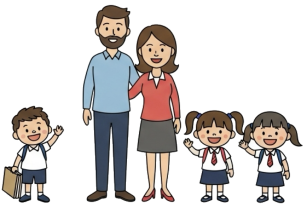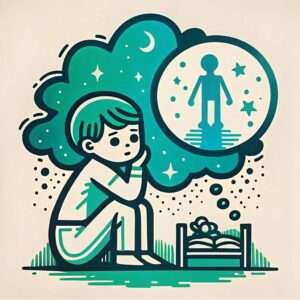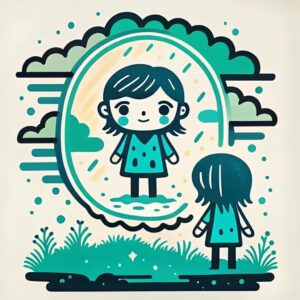
Question More, Action Knowledge.
Remember, at QMAK, we don’t just teach; we empower. We don’t just inform; we inspire. We don’t just question; we act. Become a Gold Member, and let’s unlock your child’s full potential, one question at a time.
Back to Mind Explorers
![]()
This series of games helps children develop a more expansive and flexible understanding of their own body and sense of self. By imagining bigger bodies and exploring their emotions from a place of curiosity and acceptance, children can begin to cultivate a more spacious and resilient relationship with their physical and emotional experiences.
The exercises encourage children to look beyond their habitual ways of relating to their bodies and emotions and to explore new perspectives and possibilities. By learning to give attention to their emotions without judgment or resistance, children can develop greater emotional intelligence and self-regulation skills.
Additionally, by considering questions about the nature of the self and its relationship to the body, children can begin to develop a more nuanced and expansive sense of identity, one that is not limited by physical or conceptual boundaries.
Hey there, young adventurer!
Today, we're going on an exciting journey called "The Body Explorer's Adventure."
We'll be playing some fun games that will help us discover new ways of thinking about our bodies and how we experience them.
We'll use our imagination to create bigger bodies, explore our emotions, and even watch ourselves from different perspectives.
Are you ready to embark on this thrilling exploration of your own body?
Guide the child through each of the following games, encouraging them to approach the experiences with curiosity and playfulness.
Game 1: Big Body

Game 2: Russian Doll

Game 3: Where in the Body?

Game 4: Who Has a Body?

Game 5: Watch Yourself

To further explore the concept of body awareness and the relationship between the body, emotions, and sense of self, consider introducing your child to the book “Be a Tree!” by Maria Gianferrari.
Synopsis: Compares the human body to a tree (roots as feet, branches as arms), celebrating interconnectedness and inner strength.
Connection: Mirrors Game 1 (Big Body), inviting kids to imagine their bodies as vast, rooted, and flexible.
Verse 1:
Close your eyes and take a breath
Feel your body from toes to chest
Now picture something really cool
A bigger you, it’s nature’s rule
Pre-Chorus:
Who are we beyond our skin?
Let’s play and see what lies within
Chorus:
Imagine me, imagine you
Bigger than we ever knew
Emotions dancing, bodies growing
On this journey, we keep going
Verse 2:
Like Russian dolls, we grow and grow
Each layer has more to show
Where do feelings live inside?
Let’s watch and see, no need to hide
(Pre-Chorus)
(Chorus)
Bridge:
Who has a body? Who am I?
Questions floating in the sky
Watch yourself from up above
Exploring with curiosity and love
(Chorus)
Outro:
Open your eyes, what do you see?
A world of possibility
In our bodies, big and small
We find the magic in it all

Remember, at QMAK, we don’t just teach; we empower. We don’t just inform; we inspire. We don’t just question; we act. Become a Gold Member, and let’s unlock your child’s full potential, one question at a time.